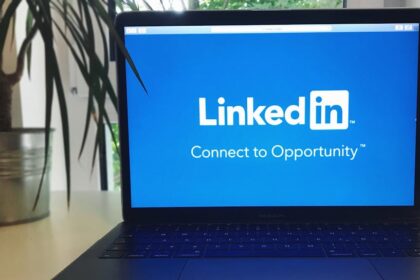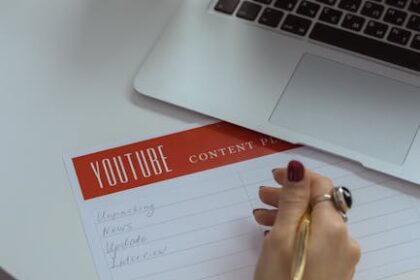The Creative Imperative: Designing Eye-Catching Social Ads
The cacophony of the digital landscape presents a formidable challenge for marketers: how to capture and retain fleeting attention in an era defined by information overload. Social media feeds, once curated personal spaces, have become bustling marketplaces, each scroll bringing a fresh deluge of content, news, and advertisements. In this saturated environment, the creative imperative is not merely an advantage but a fundamental necessity for survival and success. Ad blindness, the subconscious tendency of users to ignore elements on a webpage or app that they perceive as advertisements, is rampant. To pierce through this cognitive filter, social ads must be exceptionally designed, instantly compelling, and deeply resonant. They must transcend the transactional, evolving into mini-narratives or aesthetic experiences that demand a second glance, fostering genuine engagement rather than instant dismissal. Understanding the psychology of attention and human perception is paramount; ads must leverage visual triggers, emotional cues, and cognitive shortcuts to register effectively amidst the digital noise. The goal is not just visibility, but memorability, leading to action.
Foundations of Visual Attention and Engagement
Designing truly eye-catching social ads begins with a deep appreciation for the psychological and physiological mechanisms governing human attention. Our brains are wired to prioritize novelty, contrast, and anything that signals potential threat or reward. This innate programming dictates much of what we notice in a busy social feed. Novelty and unexpected elements break the pattern of predictability, forcing the eye to pause. This could be an unusual color palette, an unconventional composition, or a surprising visual element. Contrast, whether in color, size, or texture, creates visual tension that draws the gaze. A bright object on a muted background, or a sharp line against a soft blur, naturally stands out. Furthermore, the human eye is inherently drawn to faces and human forms. Our social programming leads us to seek out connection and emotion in others, making authentic human expressions in ads incredibly powerful for fostering empathy and relatability.
Movement and animation are indispensable in static-dominated feeds. A subtle GIF, a short video loop, or even text animation can instantly differentiate an ad from surrounding posts. The brain processes motion far more quickly and effectively than static images, making animated elements highly effective attention grabbers. However, this must be used judiciously; excessive or jarring motion can be off-putting. Color psychology plays a pivotal role, eliciting specific emotional responses and associations. Warm colors like red and orange can convey urgency or excitement, while cool colors like blue and green often evoke trust, calm, or professionalism. Strategic use of color can reinforce brand messaging and influence user perception before a single word is read. Lastly, visual hierarchy guides the user’s eye through the ad, ensuring that the most critical information—the main message, the product, or the call to action—is seen first and understood clearly. This involves intelligent use of size, placement, contrast, and focus to create a visual path.
The Anatomy of a Compelling Ad Creative
A truly compelling social ad creative is a symphony of interconnected elements working in harmony to achieve a singular objective. It’s not merely about aesthetics; it’s about strategic design that drives desired outcomes. At its core, every eye-catching ad possesses clarity and simplicity. In a fleeting scroll, there is no time for complex narratives or cluttered visuals. A single, dominant message or benefit must be immediately discernible. Overloading an ad with too much information, too many images, or competing focal points dilutes its impact and confuses the viewer, leading to rapid disengagement. The principle of “less is more” is particularly resonant in the fast-paced social media environment.
High-quality visuals are non-negotiable. Blurry images, pixelated videos, or poorly lit photography immediately signal unprofessionalism and lack of credibility, causing users to scroll past. This applies across all visual formats, from static images to sophisticated video productions. Sharp focus, appropriate lighting, and aesthetically pleasing composition are fundamental. Beyond technical quality, the visuals must be relevant to the message and the target audience. An ad for a fitness product should feature active, healthy individuals, not abstract art. This relevance creates immediate connection and understanding.
Strategic use of text overlays and typography reinforces the visual message. Text should be legible against the background, with sufficient contrast. Fonts should align with the brand’s personality and be easily readable on various screen sizes. Short, punchy headlines and concise body copy integrated seamlessly into the visual layout can enhance comprehension and call attention to key benefits. Finally, an unmistakable call to action (CTA) is the ultimate destination of the creative journey. Whether it’s “Shop Now,” “Learn More,” or “Sign Up,” the CTA must be visually prominent, clear, and compelling, guiding the user towards the desired next step. Its placement, color, and surrounding whitespace should make it stand out and invite interaction. Without a clear CTA, even the most eye-catching ad risks failing to convert attention into action.
Mastering Visual Storytelling in Social Ads
In a world drowning in data, stories are the lifeboats. Visual storytelling in social ads transcends mere product display; it builds emotional bridges, creates memorable experiences, and cultivates brand loyalty. The human brain is hardwired for narratives, making storytelling an incredibly potent tool for engagement and persuasion. Rather than simply listing features, an ad that tells a story, however brief, taps into deeper cognitive processes, making the message more relatable and impactful.
Effective visual storytelling often follows a condensed narrative arc: problem, solution, transformation. An ad might subtly introduce a pain point the target audience experiences, then visually present the product or service as the elegant solution, culminating in a visual depiction of the positive outcome or transformation. For example, an ad for a cleaning product could show a messy room (problem), then the product in action (solution), followed by a sparkling clean space and a happy user (transformation). This narrative doesn’t always need explicit text; powerful imagery alone can convey the story.
Character and emotion are central to compelling visual narratives. Featuring relatable people experiencing genuine emotions – joy, relief, excitement, belonging – allows the audience to project themselves into the scenario and feel a connection. The ad should evoke feelings, not just convey information. A parent lovingly interacting with a child using a specific toy tells a stronger story than just a picture of the toy itself. Authenticity is key; staged, overly polished scenes often fall flat. User-generated content (UGC) is particularly powerful in this regard, as it carries an inherent sense of authenticity and social proof, making the story feel more genuine and trustworthy.
Sequential storytelling, using formats like carousel ads on Instagram or Facebook, allows for a multi-panel narrative. Each slide can advance the story, showcase different aspects of a product, or build anticipation. Video ads, naturally, are powerful mediums for linear storytelling, allowing for the inclusion of sound, music, and voiceovers to amplify the emotional impact. Even a single static image can tell a story through its composition, the expressions of its subjects, and its implied context. The ultimate goal is to create an ad that doesn’t just show something, but makes the viewer feel something, leaving a lasting impression that encourages further engagement.
The Nuances of Color Psychology and Brand Identity
Color is more than just an aesthetic choice; it’s a powerful psychological tool that evokes specific emotions, sets the tone, and reinforces brand identity. When designing eye-catching social ads, a deep understanding of color psychology is indispensable. Different colors carry distinct cultural and universal associations, and their strategic application can significantly impact an ad’s effectiveness.
Red, for instance, is often associated with passion, urgency, energy, and danger. It’s an excellent choice for calls to action or to convey excitement, but can also be perceived as aggressive if overused. Blue typically evokes trust, stability, professionalism, and calm, making it a popular choice for financial institutions and tech companies. Green signifies nature, growth, health, and prosperity, often used by eco-friendly brands or those in the wellness industry. Yellow can represent optimism, happiness, and cheerfulness, but in excess can signify caution. Orange blends the energy of red with the joy of yellow, often associated with creativity, enthusiasm, and warmth. Purple is historically linked to royalty, luxury, wisdom, and spirituality.
Beyond individual color meanings, the color palette of an ad must align with the brand’s overall identity and messaging. A consistent color scheme across all marketing materials, including social ads, strengthens brand recognition and reinforces brand personality. An ad for a high-end luxury brand would likely use muted, sophisticated tones, perhaps with gold or silver accents, while a children’s toy brand might opt for bright, primary colors. Inconsistent use of color can confuse the audience and dilute brand recall.
Furthermore, contrast and harmony within the ad’s color palette are crucial for visual appeal and readability. Complementary colors (opposite on the color wheel) create high contrast and dynamism, while analogous colors (next to each other on the color wheel) create a sense of harmony and calmness. The background, product, text, and CTA should all be considered within the chosen palette to ensure everything stands out appropriately without clashing. Testing different color combinations can reveal which palettes resonate most effectively with the target audience and achieve optimal engagement rates, demonstrating that color design is both an art and a science in the quest for truly eye-catching social ads.
Optimizing Visuals for Specific Social Platforms
The “one size fits all” approach to social ad creatives is a relic of the past. Each social media platform has its unique ecosystem, user behavior patterns, and technical specifications, demanding tailored visual optimization for maximum impact and eye-catching potential. Ignoring these nuances means sacrificing reach and engagement.
Facebook and Instagram, as highly visual platforms, prioritize high-quality imagery and video. For both, aspect ratios are critical: square (1:1) is highly versatile, vertical (9:16) dominates Stories and Reels, and horizontal (16:9) works well for feed videos. Carousel ads are incredibly effective on both platforms, allowing advertisers to tell a multi-image story or showcase different product variations. Instagram’s emphasis on aesthetics means visuals should be polished, aspirational, and reflect current trends. Shopping tags and product stickers directly integrated into creatives offer a seamless path to purchase, making the visuals not just eye-catching but immediately actionable. For video, captions are essential due to silent viewing habits.
TikTok operates on raw authenticity and rapid-fire trends. Vertical video (9:16) is paramount. Ads that look like native content – user-generated style, trending sounds, quick cuts, and engaging challenges – perform best. Highly polished, traditional ads often feel out of place and are scrolled past. Sound is integral, so creative use of trending audio or original, captivating sound design is critical. The “hook” in the first 1-3 seconds of a TikTok ad is non-negotiable for capturing attention in this fast-paced environment.
YouTube is the undisputed king of long-form video, but also offers diverse ad formats. Bumper ads (6 seconds, unskippable) demand concise, impactful visual storytelling. Skippable in-stream ads (15-30 seconds+) allow for more detailed narratives, but the visual and audio quality must be top-tier to maintain viewer interest. Visual branding, clear calls to action, and effective use of the end screen are vital. Pre-roll and mid-roll ads need to deliver immediate value or intrigue to prevent skips.
LinkedIn caters to a professional audience, so visuals should reflect this tone. Infographics, professional headshots, company culture videos, and case study visuals tend to perform well. Carousel ads showcasing thought leadership or detailed product features are effective. Ad creatives here should convey credibility, expertise, and value proposition in a visually clean and authoritative manner.
Pinterest is a visual discovery engine, essentially a highly curated digital mood board. Pinners are actively looking for inspiration and planning purchases. Product-focused lifestyle imagery, DIY tutorials, and visually appealing recipes perform exceptionally well. Vertical aspect ratios (2:3 recommended) are ideal. High-resolution, aspirational images that inspire action – whether it’s a home decor idea or a new recipe – are key to standing out in a sea of visual inspiration.
X (formerly Twitter) is text-heavy, but visuals significantly boost engagement. GIFs and short, impactful videos are highly effective for capturing attention. Graphics that distill complex information into easily digestible chunks (e.g., statistics, quotes) also perform well. Ads on X often leverage trending hashtags or timely events, requiring agile creative development to remain relevant.
Each platform’s unique visual language and user expectations necessitate a bespoke approach to creative design, ensuring ads are not just seen, but truly resonate within their native environment.
The Art and Science of Ad Copy That Converts
While stunning visuals grab initial attention, it’s the interplay of those visuals with compelling copy that truly converts interest into action. Ad copy is not merely a description; it’s a persuasive dialogue, a call to curiosity, and a direct invitation to engage. Designing eye-catching social ads requires an equal mastery of the written word, ensuring the copy amplifies and clarifies the visual message.
Headlines are paramount. In the fleeting scroll, a powerful headline acts as the hook, determining whether a user pauses to read further. Effective headlines are benefit-driven, posing a question, creating curiosity, or highlighting an immediate solution to a pain point. Examples include “Tired of X? Discover Y!” or “Unlock Your Potential with Z.” They should be concise, impactful, and directly relevant to the ad’s visual. A/B testing multiple headlines is crucial to identify which resonates most effectively with the target audience.
Body copy then builds on the headline’s promise, providing just enough information to compel a click without overwhelming the reader. It should be persuasive, using techniques such as storytelling, social proof, urgency, and highlighting unique selling propositions. Instead of generic statements, effective body copy uses vivid language to illustrate the value proposition. For instance, instead of “Our software is efficient,” write “Streamline your workflow and reclaim hours with our intuitive software.” Employing testimonials, case studies, or statistics can build trust and credibility. Focusing on the “what’s in it for me?” from the user’s perspective is always more effective than simply listing features.
Microcopy, particularly on calls to action (CTAs), is often overlooked but incredibly powerful. Beyond generic “Learn More,” specific and action-oriented CTAs like “Get Your Free Quote,” “Download the Guide,” or “Book Your Spot” can significantly increase click-through rates. The language should be direct and clear about the immediate next step.
Platform-specific copy adaptation is also critical. Character limits on platforms like X necessitate extreme conciseness, favoring punchy statements and smart use of emojis. LinkedIn copy often benefits from a more formal, professional tone, while TikTok captions can be playful and conversational. Instagram excels with short, engaging captions and effective hashtag usage.
Finally, A/B testing copy variations is an ongoing necessity. Testing different headlines, opening sentences, value propositions, and CTAs provides invaluable data on what language resonates most effectively with specific audience segments. The iterative process of testing, analyzing, and refining copy ensures that the persuasive power of the words in your eye-catching social ads is continuously optimized for maximum conversion.
Harnessing Dynamic Creative and Personalization
In an increasingly personalized digital world, static, one-size-fits-all ad creatives are becoming less effective. The true frontier of eye-catching social ads lies in dynamic creative optimization (DCO) and hyper-personalization, delivering tailored ad experiences at scale. This goes beyond basic audience segmentation, leveraging data to assemble ad variations on the fly, customized to individual user preferences, behaviors, and real-time context.
Dynamic creative works by utilizing a collection of assets – images, videos, headlines, body copy, CTAs – and an algorithm that selects and combines them in the most effective way for each specific user in the audience. For an e-commerce brand, this might mean showing an ad with a product the user recently viewed on their website, featuring a headline highlighting a limited-time discount, and a CTA specific to that product. For a travel company, it could mean showing a user images of destinations they’ve searched for, with copy referencing their preferred travel dates. This level of relevance makes the ad inherently more eye-catching because it feels directly addressed to the individual, rather than being a generic broadcast.
The benefits of DCO are manifold:
- Increased Relevance: Ads feel more tailored, leading to higher engagement and click-through rates.
- Improved Efficiency: Advertisers can test countless combinations of creative elements without manually building each variation. The system learns which combinations perform best.
- Reduced Ad Fatigue: By continually cycling through different creative permutations, DCO helps keep ads fresh and prevents audiences from becoming desensitized to the same visuals and messaging.
- Scalability: Personalization can be achieved across vast audiences without a prohibitive increase in manual effort.
Implementing dynamic creative requires robust data integration, often linking CRM systems, website behavior data, and ad platform data. Advertisers define the rules for asset assembly (e.g., “if user viewed product X, show image A and headline B”). AI and machine learning play a crucial role in optimizing these rules over time, identifying patterns and predicting which creative combinations will yield the best results for different audience segments.
While the initial setup can be complex, the long-term gains in ad performance are significant. Dynamic creative fundamentally shifts the paradigm from simply creating “an ad” to creating a system that generates a multitude of personalized, contextually relevant, and inherently eye-catching social ad experiences, ensuring that each interaction is as impactful as possible.
Integrating User-Generated Content (UGC) for Authenticity
In an era of skepticism towards traditional advertising, User-Generated Content (UGC) has emerged as an exceptionally powerful tool for designing eye-catching social ads. UGC encompasses any content – images, videos, reviews, testimonials – created by everyday consumers rather than the brand itself. Its inherent authenticity, relatability, and social proof make it an unparalleled asset for cutting through ad blindness and fostering genuine trust.
The reason UGC is so eye-catching lies in its departure from polished, often sterile, brand-produced content. When users scroll through their feeds, they are accustomed to seeing content from friends, family, and other real people. An ad featuring UGC seamlessly blends into this environment, often perceived as an organic post rather than a commercial message. This natural integration immediately captures attention because it feels less like an intrusion and more like a recommendation from a trusted peer.
Key benefits and applications of UGC in social ads:
- Authenticity and Trust: Consumers trust other consumers far more than they trust brands. UGC acts as powerful social proof, validating a product’s value and building credibility. Real people using and enjoying a product is immensely persuasive.
- Relatability: UGC often features diverse individuals in everyday settings, making the ad more relatable to a wider audience. Users can see themselves using the product, fostering a stronger connection.
- Cost-Effectiveness: While there are costs associated with acquiring and rights-managing UGC, it can often be more cost-effective than professional photo or video shoots.
- Diverse Perspectives: UGC provides a myriad of creative angles and use cases for a product that a brand might not have considered internally, offering fresh, eye-catching visual narratives.
- Enhanced Engagement: Ads featuring UGC often see higher click-through rates and engagement rates because they feel more genuine and less “salesy.”
Strategies for leveraging UGC in ads:
- Encourage Submission: Run contests, create branded hashtags, or actively solicit content from satisfied customers.
- Feature Testimonials: Use video testimonials or image-based reviews directly in ad creatives.
- Showcase Product in Action: Display real customers using the product in natural environments.
- Collaborate with Micro-Influencers: These individuals often produce highly authentic content that resonates deeply with their niche audiences.
- Utilize Reviews and Ratings: Integrate star ratings or snippets of positive reviews directly into the visual ad copy or overlay.
Brands must, however, ensure they have proper permissions to use UGC in their advertising efforts and maintain brand safety standards. When seamlessly integrated, UGC transforms social ads from mere marketing messages into compelling, trustworthy, and inherently eye-catching recommendations from the wider community.
Leveraging Motion Graphics and Animation for Dynamic Impact
In the dynamic landscape of social media feeds, static images, no matter how beautiful, face an uphill battle against the inherent human attraction to movement. Motion graphics and animation have thus become indispensable tools for designing truly eye-catching social ads, capable of disrupting the scroll and conveying complex messages with engaging brevity.
The primary advantage of motion is its ability to immediately draw the eye. Our brains are hardwired to detect and respond to movement, making even subtle animations powerful attention grabbers. This isn’t just about full-blown video; it encompasses everything from animated text and transitioning images in a carousel to intricate animated illustrations.
Key applications and benefits of motion graphics in social ads:
- Scroll-Stopping Power: A simple animated logo, a product rotating, or text subtly appearing can instantly differentiate an ad from static content, forcing a pause in the user’s thumb.
- Enhanced Storytelling: Motion allows for a narrative flow that static images cannot replicate. You can show a product transforming, demonstrate a process step-by-step, or illustrate a before-and-after scenario. This visual progression keeps viewers engaged.
- Explaining Complex Concepts: Animated infographics or explainer videos can simplify intricate information, making it digestible and memorable. This is particularly effective for tech products, services, or abstract ideas.
- Highlighting Key Features: Animation can draw attention to specific product features, literally showing them in action rather than just describing them. For example, a phone ad could animate its camera zooming in or its screen showcasing an app feature.
- Adding Personality and Flair: Custom animations can infuse an ad with unique brand personality, whether it’s playful, sophisticated, or edgy. This helps create a distinctive brand recall.
- Increased Engagement: Motion graphics generally lead to higher engagement rates (likes, shares, comments) compared to static images, as they offer a richer, more interactive experience.
Types of motion graphics for social ads:
- Animated GIFs: Short, looping animations perfect for demonstrating a quick action, showcasing a product spin, or adding a humorous element. They are lightweight and autoplay.
- Animated Text Overlays: Text that slides, fades, or zooms in can emphasize key messages and direct the viewer’s attention.
- Kinetic Typography: Using animated text to convey emotion or highlight specific words in a powerful way.
- Short Explainer Animations: Illustrating a simple concept or how a product works in a concise, engaging video format.
- 2D/3D Product Renders: Animated visualizations of products, often rotating or disassembling to highlight internal components or design.
When utilizing motion, it’s crucial to ensure the animation is smooth, intentional, and not overly distracting. The goal is to enhance the message, not overshadow it. A clear call to action should still be prominently displayed, ensuring that the captivating movement leads to a desired conversion.
Leveraging AI and Advanced Tools in Creative Production
The landscape of creative production for social ads is undergoing a profound transformation, driven by the rapid advancements in Artificial Intelligence (AI) and a suite of sophisticated design and analytics tools. These technologies are not just enhancing efficiency but are actively reshaping how eye-catching social ads are conceptualized, designed, and optimized, democratizing high-quality creative output and enabling unprecedented levels of personalization.
AI’s role in creative production:
- Generative AI for Images and Copy: Tools like DALL-E, Midjourney, and ChatGPT can generate highly realistic images and compelling ad copy from simple text prompts. This drastically reduces the time and cost associated with sourcing visuals and crafting initial drafts, allowing designers to focus on refinement and strategic integration. AI can create variations of visuals, adapt copy to different tones, and even suggest entirely new creative directions based on user input.
- Creative Asset Optimization: AI-powered platforms can analyze vast datasets of successful ads to identify patterns and predict which visual elements, color schemes, or copy structures are most likely to resonate with specific audience segments. They can recommend optimal aspect ratios, image compositions, and text placements.
- Dynamic Creative Optimization (DCO) Enhancement: AI fuels the intelligence behind DCO, enabling platforms to rapidly test thousands of creative variations, learn from performance data in real-time, and automatically serve the most effective ad combinations to individual users. This hyper-personalization is impossible to achieve manually.
- Predictive Analytics for Creative Performance: AI can predict the potential performance of ad creatives before they are even launched, based on historical data and audience profiles. This helps advertisers iterate on designs proactively, minimizing wasted ad spend.
- Automated Video Editing: AI can assist in video production by automatically selecting highlight reels, syncing audio, adding captions, and even generating voiceovers, making video ad creation more accessible.
Advanced design and analytics tools:
- Professional Design Software (Adobe Creative Suite, Figma, Sketch): These remain foundational for high-fidelity graphic design, video editing, and UI/UX design, allowing for granular control and bespoke creative.
- Accessibility Tools: New tools help designers ensure their ads meet accessibility standards (e.g., sufficient color contrast for visually impaired users, automatic alt-text generation for images), making ads eye-catching for a broader audience.
- A/B Testing and Multivariate Testing Platforms: Beyond basic platform tools, dedicated testing suites provide deeper insights into creative performance, allowing for rigorous comparison of different ad elements.
- Eye-Tracking and Heatmap Software: While often used for website optimization, these tools can be adapted to analyze where users’ eyes linger on an ad creative, providing empirical data on visual hierarchy and focal points.
- Stock Media Libraries (Getty Images, Shutterstock, Pexels): While AI generates novel images, high-quality stock photography and videography remain critical resources for specific needs, requiring careful curation and licensing.
By embracing these AI-driven capabilities and leveraging advanced design tools, marketers can elevate their creative output, achieve unprecedented levels of personalization, and ensure their social ads are not just eye-catching but strategically optimized for maximum impact and return on investment.
Measuring Success: KPIs for Creative Effectiveness
Designing eye-catching social ads is only half the battle; understanding if they are actually effective is the other. Measuring the success of creative campaigns requires a robust framework of Key Performance Indicators (KPIs) that go beyond simple vanity metrics, providing actionable insights for optimization and future strategy. The right KPIs illuminate what aspects of the creative are truly resonating with the target audience and driving desired business outcomes.
Primary KPIs for Creative Effectiveness:
- Click-Through Rate (CTR): This is perhaps the most direct indicator of an ad’s initial “eye-catching” ability. A high CTR means your creative is effectively grabbing attention and compelling users to learn more. It measures the percentage of people who saw your ad and clicked on it. A low CTR, despite high impressions, signals that the ad is failing to stand out or entice action.
- Engagement Rate: This encompasses various interactions beyond clicks, such as likes, shares, comments, video views (especially 3-second or 10-second views), and saves. High engagement indicates that the creative is sparking a reaction, resonating emotionally, or providing value to the audience, encouraging them to interact or spread the message organically.
- Conversion Rate: This is the ultimate business KPI. It measures the percentage of users who clicked on your ad and then completed a desired action (e.g., made a purchase, filled out a lead form, downloaded an app, signed up for a newsletter). While conversion is influenced by landing page experience and offer, a strong ad creative is fundamental to attracting the right audience who are predisposed to convert.
- Cost Per Click (CPC) / Cost Per Engagement (CPE) / Cost Per Acquisition (CPA): These cost-efficiency metrics tie directly back to creative performance. An eye-catching and relevant ad will likely achieve lower CPC/CPE because it generates more clicks/engagement for the same ad spend. Lower CPA signifies that the creative is effectively attracting high-quality leads or customers at a reduced cost.
- View-Through Conversions (VTC): For video ads, VTCs measure conversions that occur after a user saw an ad but didn’t necessarily click on it. This acknowledges the branding and awareness impact of video creatives, even without direct interaction.
- Ad Recall / Brand Lift: Often measured through brand lift studies, this KPI assesses how memorable your ad creative is and its impact on brand awareness, favorability, and purchase intent among exposed audiences versus a control group. This is crucial for branding campaigns where direct clicks aren’t the sole objective.
Secondary & Diagnostic KPIs:
- Frequency: How many times, on average, a user sees your ad. High frequency coupled with declining CTR or engagement can indicate ad fatigue, signaling it’s time to refresh your creative.
- Video Completion Rate (VCR): For video ads, this measures how much of your video users are watching. A low VCR means your video creative isn’t holding attention.
- Time on Ad: Some platforms or third-party tools can track how long users pause on or interact with an ad, providing deeper insights into engagement.
By consistently monitoring these KPIs and conducting rigorous A/B tests on creative variations, marketers can gain invaluable insights into what makes their social ads truly eye-catching and, more importantly, effective in driving measurable business results.
Combating Ad Fatigue and Refreshing Creatives
Even the most brilliant, eye-catching social ad will eventually succumb to ad fatigue. This phenomenon occurs when audiences are repeatedly exposed to the same ad creative, leading to diminishing returns, declining engagement rates, and increased cost per action. Users become desensitized, subconsciously tuning out the familiar message, and perceive the ad as stale or annoying. Recognizing and proactively combating ad fatigue is a critical component of sustaining successful social ad campaigns.
Indicators of Ad Fatigue:
- Declining CTR: Your click-through rate starts to drop significantly over time for a specific creative.
- Decreased Engagement: Fewer likes, shares, comments, or video views.
- Increased CPC/CPA: The cost to acquire a click or conversion begins to rise, indicating inefficiency.
- Rising Frequency: As your audience sees the ad more often, its effectiveness wanes. Many platforms provide frequency metrics, which can serve as an early warning sign.
- Negative Feedback: Users may start to hide your ads, report them, or leave negative comments, signaling irritation.
Strategies for Refreshing Creatives and Combating Fatigue:
- Variations on a Theme: Instead of entirely new concepts, create subtle variations of your top-performing ads. This could involve changing the background color, swapping out the model, altering the headline, or using a different call-to-action button. These small tweaks can often be enough to make the ad feel fresh without reinventing the wheel.
- New Angles and Perspectives: Explore different facets of your product or service. If you’ve focused on benefit A, create ads that highlight benefit B. If you’ve used lifestyle shots, try product-focused visuals. Show different use cases or target different pain points.
- Explore Different Formats: If your ads have been primarily static images, introduce short videos, carousel ads, or animated GIFs. If you’ve been using long-form video, test out bumper ads. Leveraging various platform-specific formats can keep your content diverse.
- A/B Testing Continuously: Make A/B testing an ongoing process. Always have new creative variations in the pipeline to test against existing winners. This allows you to identify new high-performers before existing ones burn out.
- Segment Your Audiences: Different audience segments may respond to different creatives. By creating ads tailored to specific demographics, interests, or behaviors, you can ensure relevance and reduce fatigue within smaller groups.
- Leverage User-Generated Content (UGC): UGC inherently feels fresh and authentic, as it’s constantly changing. Encouraging and incorporating new UGC into your ad strategy provides a never-ending stream of diverse and relatable content.
- Run Seasonal or Timely Campaigns: Tie your creatives to current events, holidays, or seasonal trends. This ensures your ads are always relevant and timely, naturally reducing the risk of staleness.
- Retargeting Creatives: Tailor specific creatives for retargeting audiences. For users who have previously engaged, the ad can be more direct or offer a stronger incentive, leveraging their prior interaction.
Proactive monitoring and a systematic approach to creative iteration are essential. By understanding the lifecycle of your ad creatives and having a strategy to continually refresh them, you can maintain high levels of engagement and cost-efficiency, ensuring your social ads remain consistently eye-catching and effective.
Ethical Considerations and Responsible Ad Design
While the pursuit of eye-catching social ads often focuses on maximizing engagement and conversion, it is equally imperative to adhere to ethical considerations and responsible design practices. The digital advertising ecosystem, if unchecked, can become a breeding ground for deceptive tactics, privacy infringements, and harmful content. A commitment to ethical ad design not only builds long-term brand trust but also ensures compliance with evolving regulations and fosters a healthier digital environment.
Key Ethical Principles in Social Ad Design:
- Authenticity and Transparency:
- Honest Representation: Ads must accurately represent the product or service. Avoid misleading claims, exaggerated benefits, or doctored images that misrepresent reality.
- Clear Disclosure: If an ad is sponsored content or features an influencer, this must be clearly and unambiguously disclosed.
- Avoid Clickbait: While intriguing headlines are good, deceptive clickbait that promises one thing and delivers another erodes trust and damages brand reputation in the long run.
- Data Privacy and Usage:
- GDPR, CCPA, and Beyond: Ad design and targeting must comply with global and regional data privacy regulations. This means ensuring user data used for personalization is collected and processed legally and transparently.
- Informed Consent: Be clear about what data is collected and how it’s used. Avoid dark patterns that trick users into sharing more information than they intend.
- Accessibility and Inclusivity:
- Universal Design: Design ads that are accessible to all users, including those with disabilities. This includes using sufficient color contrast for text, providing alt text for images (which also benefits SEO), and adding captions/transcripts for video content.
- Diverse Representation: Feature diverse individuals in your ad creatives to reflect society accurately and avoid alienating segments of the audience. Avoid perpetuating stereotypes.
- Brand Safety and Suitability:
- Contextual Placement: Ensure your ads appear in brand-safe environments, avoiding association with harmful, offensive, or inappropriate content.
- Responsible Messaging: Avoid promoting harmful products or services, or using messaging that incites hatred, violence, or discrimination.
- Avoiding Exploitative Tactics:
- No Psychological Manipulation: Steer clear of psychological manipulation tactics that prey on vulnerabilities (e.g., creating undue pressure, shaming, or exploiting fears).
- Truth in Scarcity/Urgency: If using scarcity or urgency, ensure it’s genuine. False claims of limited stock or expiring offers are unethical.
- Respect for User Experience:
- Non-Intrusive Design: While eye-catching, ads should not be overly intrusive, disruptive, or difficult to close. Excessive pop-ups or auto-playing videos with sound can harm user experience.
Ethical ad design is not a constraint but a competitive advantage. Brands that prioritize transparency, respect user privacy, and design inclusively build stronger, more loyal relationships with their audience. In a world where trust is a rapidly depreciating asset, responsible ad creative is paramount to long-term success and truly enduring brand value.
Future Trends Shaping Social Ad Creativity
The digital advertising landscape is in a perpetual state of flux, driven by technological innovation and evolving user behaviors. To remain at the forefront of designing truly eye-catching social ads, marketers must anticipate and adapt to emerging trends, many of which promise to redefine the very nature of ad creative.
- Generative AI as a Creative Partner: The capabilities of AI to generate realistic images, video snippets, and compelling copy are rapidly advancing. In the near future, AI won’t just optimize existing assets but will actively co-create ads, allowing for unprecedented speed in iteration and personalization at scale. Advertisers will leverage AI to brainstorm concepts, draft storyboards, generate multiple visual styles, and even animate basic videos, fundamentally shifting the human role towards curation, strategic direction, and ethical oversight.
- Immersive Experiences: Metaverse, AR, and VR Ads: As the metaverse concept evolves and augmented reality (AR) and virtual reality (VR) become more mainstream, advertising will move beyond flat screens into immersive, interactive 3D environments. Eye-catching ads will become playable experiences, virtual storefronts, or interactive product demonstrations within digital worlds. Imagine trying on virtual clothes with an AR filter in an Instagram ad, or exploring a car in a VR showroom within a metaverse platform.
- Live Shopping and Livestream Ads: The convergence of e-commerce and live video is creating new opportunities for real-time, interactive ad experiences. Brands will increasingly integrate shoppable elements into live streams, with creators or influencers demonstrating products and answering questions in real-time. Ads might appear as “drops” or exclusive offers during a livestream, leveraging FOMO and direct interaction.
- Audio-First Ads and Sonic Branding: With the rise of podcasts, audio social platforms (e.g., Clubhouse), and voice assistants, audio-first advertising will grow in prominence. Eye-catching in this context means distinctive sonic branding, creative use of sound effects, and compelling voiceovers that can capture attention even without visuals. Ads might be designed specifically for smart speakers or integrated seamlessly into audio content.
- Hyper-Personalization and Contextual Relevance: While dynamic creative is already in play, the future will see hyper-personalization taken to new extremes. Ads will not only be tailored to individual preferences but also adapt in real-time based on immediate context – location, weather, time of day, current mood (inferred from activity). This makes every ad experience uniquely relevant and, therefore, inherently more eye-catching.
- Ethical AI and Transparent Ad Experiences: As AI becomes more pervasive, there will be a greater emphasis on ethical AI in advertising. This includes transparency about how AI is used to target and personalize ads, ensuring fairness, and avoiding bias in algorithms. Brands that prioritize user privacy and ethical data practices will gain a significant trust advantage, making their ads not just visually appealing but also morally attractive.
- The Blurring Lines Between Content and Commerce: Social platforms are continually integrating shopping features directly into their content feeds. Future ad creatives will increasingly blur the lines between organic content and direct commerce, making the path from discovery to purchase almost instantaneous and frictionless.
Staying abreast of these trends requires continuous learning, experimentation, and a willingness to embrace new technologies and creative paradigms. The future of eye-catching social ads lies in their ability to be not just seen, but experienced, personalized, and seamlessly integrated into the evolving digital lives of consumers.











